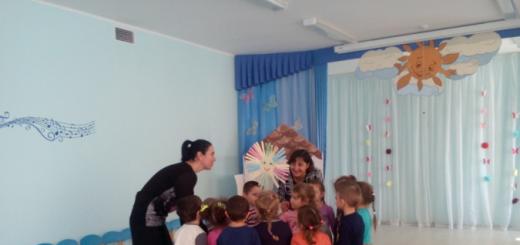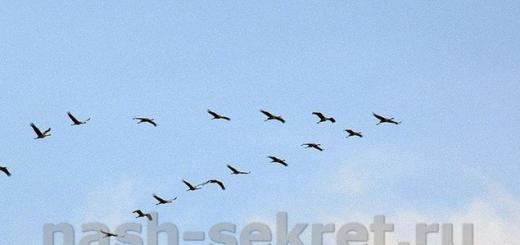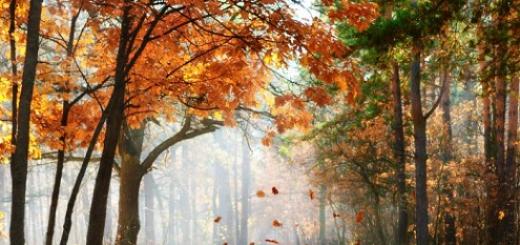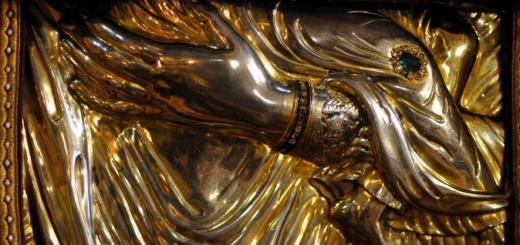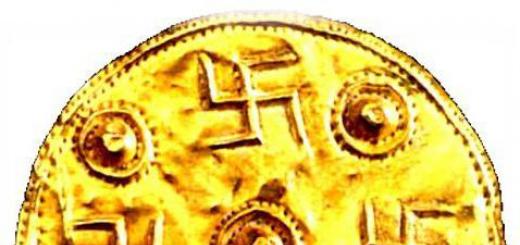Organize your child's yard or village friends and offer them one of these activities.
The game "At the bear in the forest"
Two straight lines are drawn on the ground at a distance of 6-7 meters from each other. Behind one line is a "bear" (leading), behind the other - children. Players leave the house and go to the forest (the space between two lines) to pick berries and mushrooms. They “tease” the bear, coming as close as possible to his lair and singing a cheerful song in chorus:
Like a bear in a forest
I take mushrooms.
But the bear does not sleep
He is looking at us all.
As soon as the text is over, the bear should jump out of its lair and try to knock down one of the players. Children tend to run into their house as soon as possible (beyond the line). The one whom the driver catches becomes a bear himself.
Game "Colors"
This old Russian folk game has several names, one of which is "Traffic Light". A "monk" (leader) and a "seller" are selected. The rest of the participants in the game agree and guess the colors of the paints so that there are no repetitions (each participant will have his own color). The monk comes to the seller and asks to give him paint. The “seller” says: “I have a lot of colors, but what do you need?” The monk names some color, for example, blue.
Salki game
Cheerful folk outdoor game for children. The driver is selected - he must catch up with the players and “salt”. The salted person becomes “water” and must run after the rest of the participants, while holding on to that part of the body that the former leader just touched.
If no one thought of such a color, the seller replies: “Go along the blue path, find blue boots, wear them and bring them back.” The monk restarts the game. If the blue paint is guessed by someone, the player tries to escape from the monk, and he catches up with him. If it is possible to catch up and taunt, then the monk becomes "paint", and the tagged player becomes a monk. If not, the game starts again with the same driver.
The game "Cossacks-robbers"
The famous Russian folk game for preschoolers and older children. Children are divided into two teams - Cossacks and robbers. The Cossacks have their own shelter, in which the watchman sits - he will guard the captured robbers throughout the game. The Cossacks first give the robbers the opportunity to scatter and hide. At the same time, the team must leave behind "evidence" - arrows are drawn on the ground, notes are left, etc. hints. But traces can also carry false information.
After 10-20 minutes, the Cossacks come out of their hiding place and start looking for the robbers. The end of the game comes when all the robbers are found and taken under the protection of the watchman. Then the robbers with the Cossacks change roles.
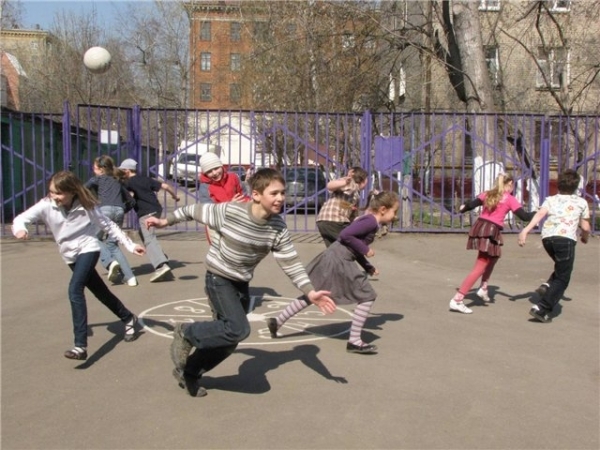
Game "Geese"
On the playground at a distance of 10 meters, two parallel lines are drawn - these are “houses”. Players (geese) enter one line, one person (the owner) enters the other. A wolf (leader) stands between the houses.
Geese-geese? (owner) - Ha-ha-ha! (geese) - Do you want to eat? - Yes Yes Yes! - Well, fly! - No no no! The gray wolf behind the mountain does not let us go home!
After that, the geese must run over to the side of the owner so that the "wolf" does not taunt them. The one who gets caught by the driver becomes the "wolf" himself
Game "Hide and Seek"
This Russian folk game for children is familiar to everyone, but not everyone uses its variants. The basic rule is that "water" is looking for children hiding on the street or indoors. That, the place near which he starts counting out loud to 20, 50 or 100 is called a con. It can be a wall, a tree, etc. As soon as the driver sees one of the players, he runs to the horse, knocks on him and loudly pronounces the name of the person found.
If the discovered participant manages to reach the end before the “water”, he is not considered caught - the child steps aside and waits for the end of the game. The next time the leader is assigned to the one who was discovered most recently, unless, of course, he had time to knock on the horse. When the "water" is very far away, each player has the right to jump out and quietly make his way to the stake, knock and give his name - this will guarantee that he will not be the last player found.
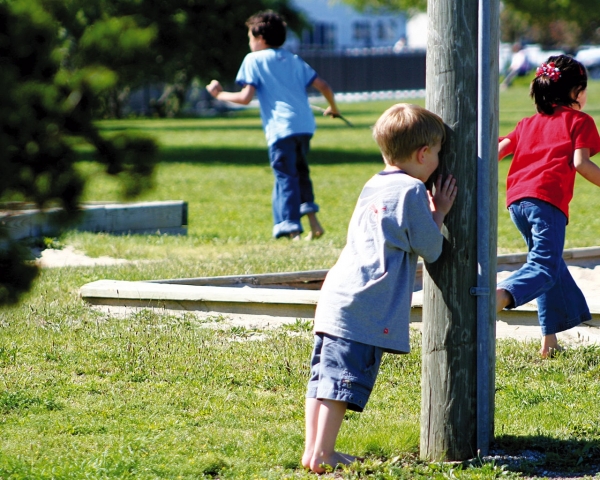
Game "Catch a fish"
This Russian folk game is quite suitable for the room. The players form a circle. "Water" is selected - he stands in the center and picks up a rope or a rope. In kindergarten, his role is played by the teacher. Water rotates the rope on the ground around its axis, and the participants must have time to jump over it. Whoever gets caught (does not have time to jump) on the "bait" is eliminated from the game or takes the place of the leader.
The game "Slow down"
Great folk game in kindergarten. "Water" and the players stand on opposite sides of the two lines (they are drawn at a distance of 5-7 meters from each other). The goal of the participants is to reach the driver as soon as possible and touch him. The one who does it before the rest takes his place. During the movement of the players, the water periodically says: “You go quieter - you will continue. Freeze! On this word, the players should freeze. Now the leader's task is to make someone move, laugh, speak. Then the participant will have to return to the beginning of the path - beyond the line. It is allowed to make faces to the players, tell something funny, look carefully into the eyes, but do not touch.
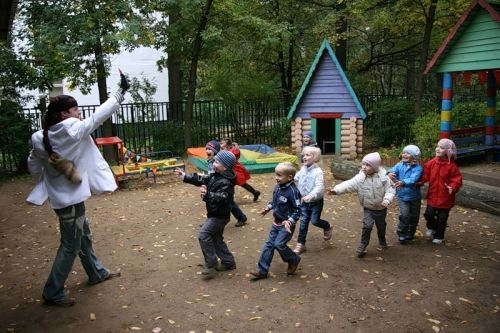
Game "Burners" One of the Russian folk winter games. The kids line up in a column of two, holding hands. The host stands with his back to them a few steps away and says: “Burn, burn clearly so that it doesn’t go out! One, two, three - the last pair run out! The guys who are the last in the column quickly run across and stand in front. The host must hurry to get ahead of them, taking one place of the first pair. To whom there is not enough space, he himself becomes "water", which himself appoints a running pair (last, second, fourth, etc.). The task of the players is to be attentive and remember what number they are in the column.
Games of the peoples of the world for children
Game "Storks" (Ukrainian)
The game is attended by 6-8 children who represent storks. All players stand in a common circle, and each of them draws a smaller circle around him (1 meter in diameter) - this will be a “nest”. The driver stands in the center of a large circle - he does not have a “nest”. When the "water" gives a signal, the storks must raise their right leg and remain standing. The driver also jumps on one leg, and then jumps into someone's "nest". Then two competitors jump out of the "nest" and jump on one leg, rounding the general circle (it is allowed to change the leg already). The one who is the first to return to the original circle remains in the "nest". The latecomer is appointed as the driver.

Lame Chicken game (Turkmen)
Players are divided into teams, each of which has three people. All participants stand along the start line. The last two of each trio join hands, and the one in the middle throws his left leg onto their interconnected hands. It turns out a "lame chicken" on five legs. At the signal of the leader, the race begins, in which the team that comes to the finish line before the rivals wins.
Quinta game (Lithuanian)
In such a game of different nations for children, 5 players participate. A square with a side of 10 meters is drawn on the asphalt or on the ground. Four participants stand at the four corners of the figure. In the center of the square, a circle with a diameter of one and a half meters is drawn - the fifth person (quint) gets into it. The "corners" throw the ball at the fifth, and he tries to dodge the object without going beyond the boundaries of the outlined circle. The one who falls into the fifth, takes his place.
The game "Shpen" (Belarusian)
A peg (wooden block) is installed in the center of the field. The leader is standing next to him. The players form a circle, each has a bat in his hand. The goal of the participants is to throw the bat with force so as to hit the peg and so that it rolls as far away from the center as possible. If someone manages to do this, then the leader runs after the bar, and the players at this time must pick up the thrown bits.

When the “water” sets the peg, he must have time to grab one of the bits before her owner did. If he fails, he remains the leader in the next round. A wonderful game of the peoples of the world for children, not only in the village, but also in urban settings (in a park, square). The pin can be replaced with pins, and the bits with balls (this way it will be even more difficult to hit the pin).
The game "One in a circle" (Hungarian)
Children stand in a circle, in the center of which is the driver. Players start throwing a small ball to each other. The task of "water" is to intercept the toy. Any child can suddenly throw the ball at the leader. If he does not dodge the ball, the game continues. If the driver caught the ball in his hands or dodged it, then he takes a place in the circle, and the player who threw the ball at him becomes the center.
Game "Balteni" (Latvian)
For such an outdoor game of the peoples of the world for children, it is better to choose summer time. The venue can be a park or clearing. All players lie face down on the grass and close their eyes. The driver throws the balteni (bat) as far as possible into the thickets of grass or bushes. At his signal, the participants run to look for the object. The one who finds it first becomes the leader.

